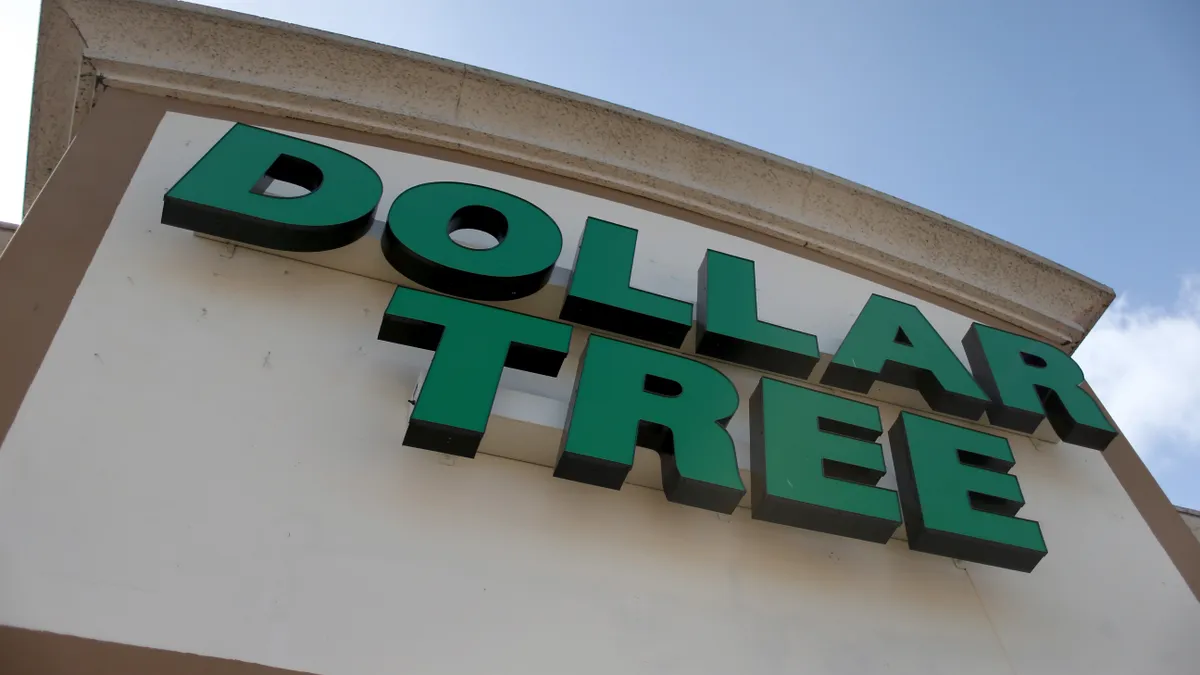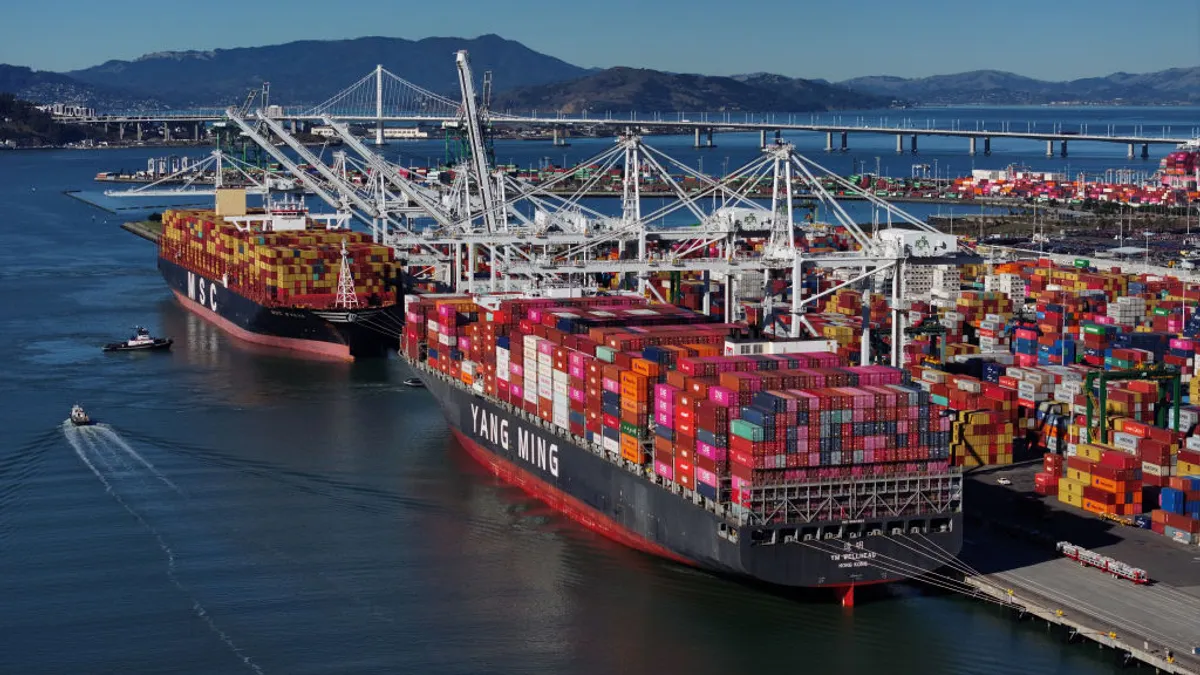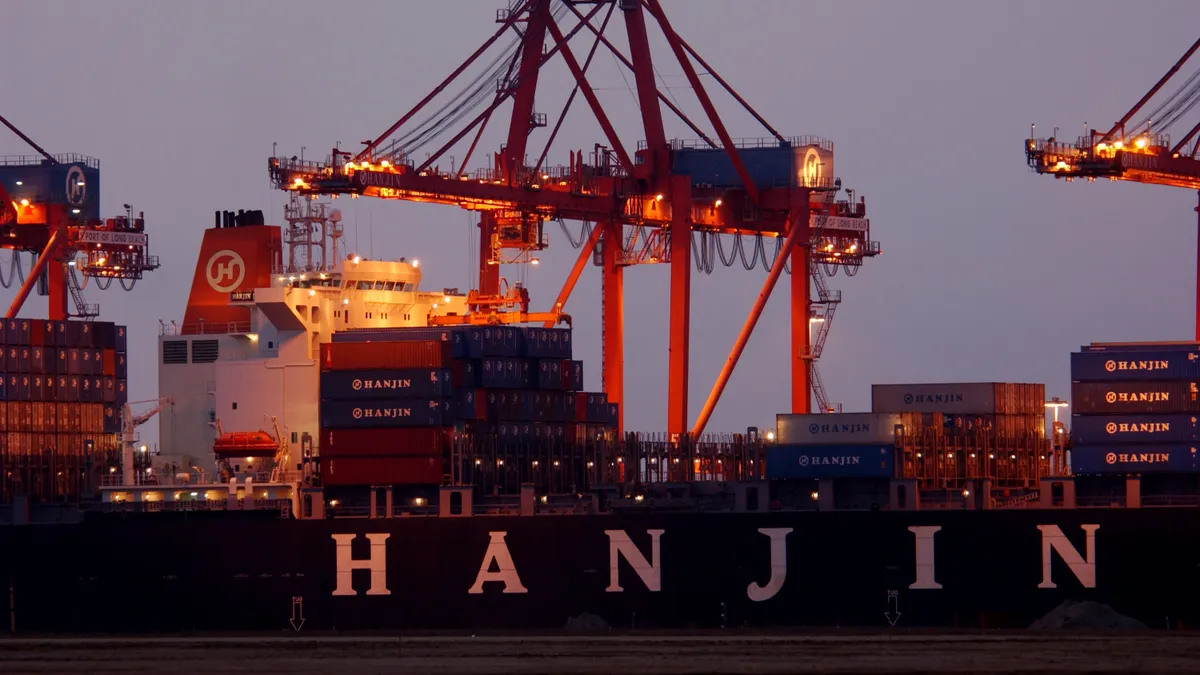Shipping bottlenecks and freight costs are hitting retailers across the board. While many players have responded with price increases for consumers, when the proposition is a single price point — say $1 — the options for mitigating costs are more limited.
At Dollar Tree, management piled on an additional $185 million to $200 million in estimated freight costs for the year to the company's profit estimates. That could raise the figure to up to $1.60 in freight costs per share in 2021, creating a major drag on earnings for the year. The revised outlook comes as ocean rates from China have risen 20% since May, which was growth on top of all-time highs, according to Dollar Tree.
And for all those costs, the retailer now expects it will take delivery of fewer goods. Dollar Tree previously assumed that ocean carriers would fulfill 85% of their contractual commitments — already a problematic situation — along with higher rates. Now the company projects that its regular carriers will fulfill just 60% to 65% of their commitments.
It's not hard to see why the company is so vulnerable to the global shipping log jams. Dollar Tree brings in nearly 90,000 40-foot containers per year, mainly for the Dollar Tree banner, CEO Mike Witynski told analysts this week, according to a Seeking Alpha transcript.
"We believe the Dollar Tree banner imports more containers per $100 million in sales than other large retailers," Witynski said. "And combined with our low $1 price point, we have an outsized impact from freight costs."
As the executive noted, when congestion in the global shipping system occurs, it reverberates and compounds just as with any other kind of transportation congestion.
"To give you a real-life example of the kinds of challenges we're seeing, one of our dedicated charters was recently denied entry into China, because a crew member tested positive for COVID, forcing the vessel to return to Indonesia to change the entire crew before continuing," Witynski recounted. "Overall, the voyage was delayed by two months."
"Combined with our low $1 price point, we have an outsized impact from freight costs."

Mike Witynski
CEO of Dollar Tree
Executives at rival Dollar General called out freight as a headwind, but they painted a less dire picture for the company. In fact, the word "freight" came up just eight times on Dollar General's Q2 conference call, compared to 41 times on Dollar Tree's call.
"Like with our Q2 results, we do expect some continued pressure on gross margin in the second half, due primarily to inflation, which we believe to be transitory but related to higher transportation costs, higher than previously expected," Dollar General CFO John Garratt said on a conference call Thursday, according to a Seeking Alpha transcript.
In its earnings release, Dollar General noted increased freight costs, but its profit outlook held mostly steady while its sales expectations increased.
Dollar General is coming off a boom year. The pandemic gave a tremendous lift to the retailer's stores, which became one-stop shops for consumers trying to minimize their time in stores. And it also sold the household essentials that consumers stockpiled in the early months of the pandemic.
In Q2, Dollar General's net sales fell 0.4% from the same period last year to $8.7 billion. That's likely to be expected, given the extraordinary circumstances of 2020. As GlobalData Managing Director Neil Saunders put it, "While any negative number casts a shadow over the results, this reduction is extremely modest and is nothing to be concerned about."
He pointed to two likely causes in the sales slowdown, namely a normalization in grocery shipping habits and a reduction in shopper numbers. "As the pandemic has seemingly eased and restrictions have been lifted, some non-core Dollar General customers have resumed shopping less locally and going farther afield for their needs — including to larger stores like Walmart," Saunders said.
"We expect to see ... a negative impact on sales due to potential out-of-stocks and lower service levels."

Joe Feldman
Senior Managing Director and Assistant Director of Research at Telsey Advisory Group
Telsey Advisory Group analysts led by Joe Feldman said in a research note that Dollar General's comparable sales and profits beat their estimates "as a healthy consumer environment, ongoing strength of consumables, and multiple non-consumables initiatives helped results, partly offset by the challenging COVID-19 comparison from last year."
Meanwhile, at Dollar Tree, sales were up 1% companywide to $6.3 billion. That figure hides a slight decrease in comps (0.2%) at the Dollar Tree banner and a larger (2.1%) decrease at the Family Dollar banner, which had a tougher comparison because of a product mix that led to a better performance during the pandemic last year.
But the retailer has been hit harder by freight costs than Dollar General, and Feldman's team downgraded their expectations for the company's stock due to freight.
"Dollar Tree's ability to pass on higher costs by raising prices is limited, given most items in the namesake banner (~52% of sales) are priced at $1.00," Feldman said. "As a result, we expect to see significant pressure on profitability over the next four quarters, including 1H22, along with a negative impact on sales due to potential out-of-stocks and lower service levels."























